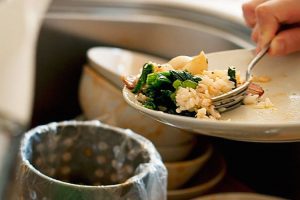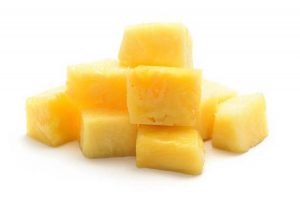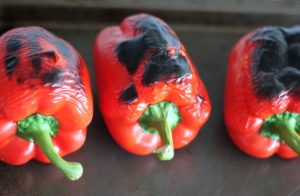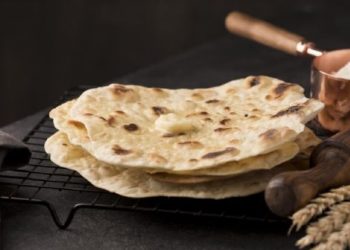Tackling Food Waste
It’s so easy for us to throw away food. The more I think about this, the more upset I get with myself. Just because we are in a privileged position to be able to afford to eat whatever we like, we also take one bite and throw the rest away without a worry in the world. In fact, it has prompted me to think of about how I can start to manage food wastage on a personal level before I can start preaching to the choir.
How to manage food wastage is an art. Following are just a few tips and tricks I have been using in order to utilize what would otherwise be considered food waste and been thrown out immediately.
In order to make the most of what we are blessed with in terms of food, one must learn how to utilize it to the fullest, so whether its animal bones, stale bread or fruit gone bad here are a few things you can do to make it useful instead of throwing it into the trash can.

Stale Bread
To manage food wastage of bread, if you are generally not a bread eating family or only buy a loaf on occasion and often end up with stale bread there are a lot of things you can do with left over bread.
You can simply freeze half the loaf as soon as you bring it home, take out a slice as and when you need it and pop it into your toaster to warm it up or defrost it quickly.
If you do end up with one or two leftover slices, you can dry these out in your oven or if it’s a sunny day, out in the sun. Once dried, you can crush these up coarsely or run them through a food processor to use the crumbs to coat anything you want to deep fry for that added crispiness. Dried breadcrumbs can be stored at room temperature in an airtight container.
If you wan to put in a little bit of extra work, you can cut your extra slices of bread into tiny squares, drizzle them with a bit of olive oil and bake them or deep fry them to use as croutons for your salads!
If you want something sweet, you can use your stale bread to make bread pudding or French toast, they both are made best with stale bread as opposed to fresh bread.
Bones
In order to manage food wastage of bone, whether you buy chicken, beef or mutton; make sure to never discard the bones as they are full of the good stuff, quite literally! After thoroughly rinsing the bones, place them in a large pot, add two onions, two carrots, sprig of parsley, a bay leaf and some peppercorns to every 2 kilograms of bones. Fill the pot up three quarters with water and let it come to a light simmer. Keep on skimming the top of the pot to remove any foam that gathers.
For chicken let the stock cook for at least four hours, for mutton between six to seven hours and for beef up to eight hours.
Once the stock has cooled down, skim the top, strain the stock, label it and store it in your fridge for up to five days and in your freezer for up to a month. The stocks that you make at home are a hundred percent better in taste and nutrients than the store bought powdered bullions that are packed full of chemicals! These are easy to make and store and are literally a great way to make something out of what would otherwise be considered as waste!
Vegetables
If you’re a vegetarian then you can use vegetable peels to make your own own stock. Simply throw in the bulk of your carrot, onion, spring onion peels as well as parsley cut offs and season to your liking Add three quarts of water and bring to a simmer for 45 minutes to an hour. Cool the stock, strain and store.
A great way to use tomatoes that have gone soft is to score them and soak them in hot water for 30 seconds. Then remove the skin, chop them and store them in a jar, simply add a layer of olive oil in the jar and close tightly. Use these tomatoes within two or three days.
If you have red peppers sitting in your fridge, you can cut them in halves, roast them with some olive oil, remove the skin and store them in a jar of olive oil to use later. The oil acts as a preservative and you can keep reusing the oil to top up the roasted red peppers. You can use the roasted red peppers in salads, sandwiches and even pasta bakes. Similarly you can roast most vegetables that have low water content and can be easily preserved.
If you love pickled vegetables, you can use leftover cabbage or cucumbers, cut them into very thin slices and keep them soaked in a jar of apple cider vinegar to add to salads or to have on their own. Pickling is a great way of tackling food waste!
Fruit
Another way to manage food wastage when you have seasonal fruits in bulk; you can learn how to make jam. First you must taste the fruit to determine how sweet it is. Often we add equal parts of sugar to the weight of the fruit but with experience you learn how to balance it out. So whether it’s leftover mango or a bulk of pomegranates, you can learn how to make your own jam with left over fruit. Alternatively, some fruits also freeze well, so you can also freeze fruits, to use later in milk shakes or smoothies.

Food waste is a real problem and we need to start to learn how to manage food wastage ourselves. Sometimes we do tend to overestimate how much we should buy, in which case we have a number of ways in which we can avoid wasting food. However, we should try to be the change we want to see and start with ourselves.





